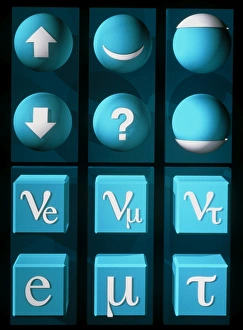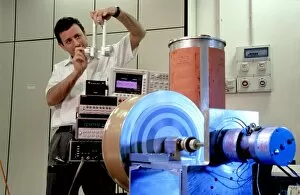Neutrino Collection
"Unveiling the Elusive Neutrino: A Journey through Physics and Art" In the world of physics
All Professionally Made to Order for Quick Shipping
"Unveiling the Elusive Neutrino: A Journey through Physics and Art" In the world of physics, Joseph Weber stands as a pioneering figure in unraveling the mysteries of neutrinos. His groundbreaking work paved the way for our understanding of these elusive particles that have captivated scientists for decades. Captured in a mesmerizing conceptual image C013/5625, we catch a glimpse of a neutrino burst - an extraordinary phenomenon that occurs when these ghostly particles are released with immense energy. This visual representation serves as a testament to their enigmatic nature. Another luminary in this field is Bruno Pontecorvo, an Italian physicist who made significant contributions to neutrino research. His invaluable insights propelled us closer to comprehending the intricate properties and behaviors of these subatomic entities. Through captivating conceptual artworks, we delve into the realm of neutrinos once more. These vibrant illustrations offer glimpses into their mysterious existence and highlight their importance in shaping our universe's fabric. The artwork depicting neutron star structure takes us on a cosmic journey where intense gravitational forces give birth to unimaginable phenomena involving neutrinos. It reminds us that even within celestial bodies, these tiny particles play crucial roles in various astrophysical processes. Muon and neutrino detectors showcased through artistic renditions demonstrate how cutting-edge technology aids physicists in capturing fleeting interactions between these elusive particles and matter. Such advancements allow us to gain deeper insights into their behavior and properties. Crystal-based neutrino detectors take center stage as they showcase innovative methods employed by scientists to detect these evasive entities amidst vast cosmic backgrounds. The intricacy behind such instruments highlights humanity's relentless pursuit of knowledge about fundamental building blocks like quarks and leptons – beautifully depicted through artful renderings. As we explore this captivating world where science intertwines with artistry, we realize that unraveling the secrets held by neutrinos requires both scientific rigor and creative imagination.










